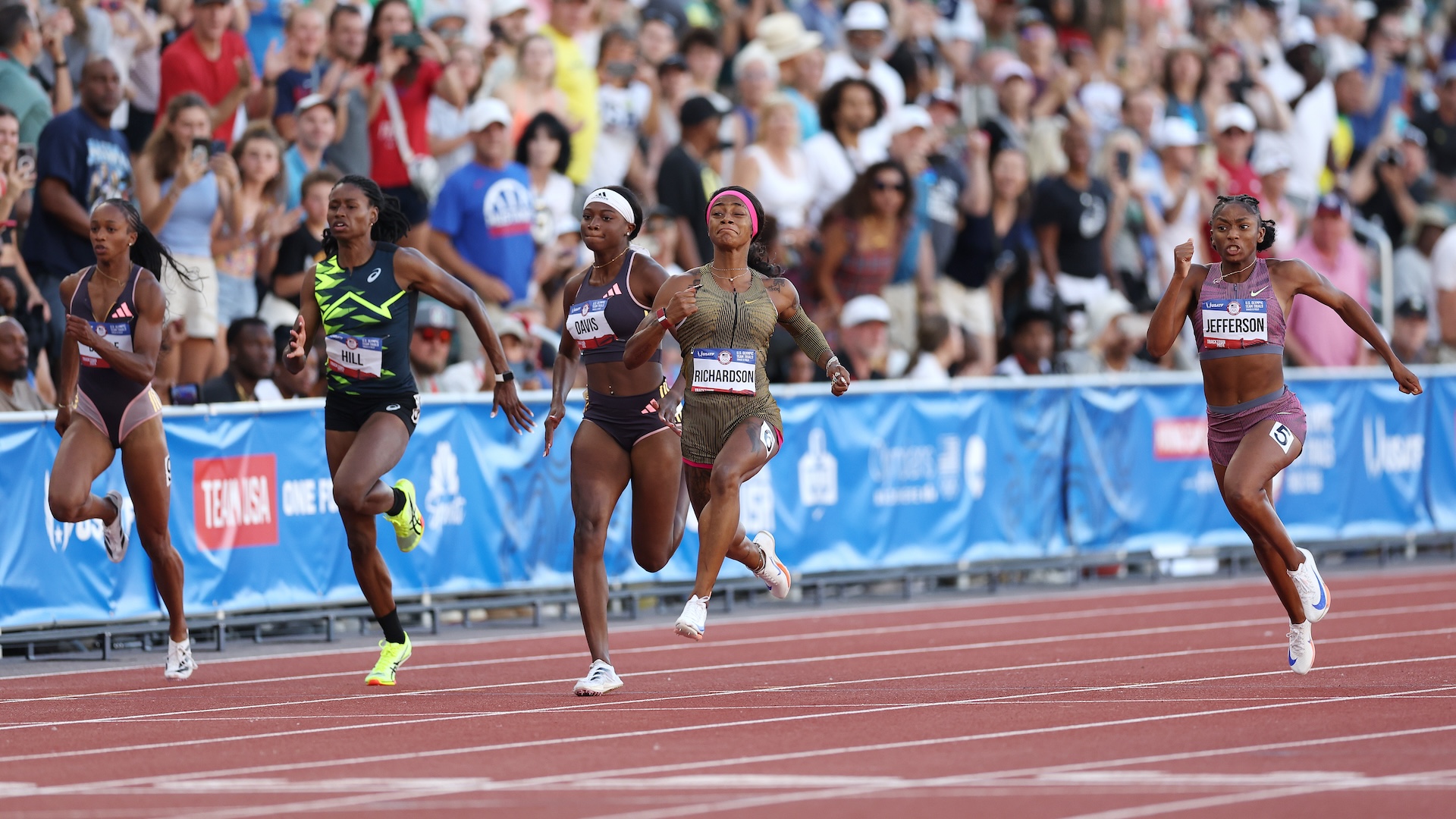Which Olympic sport burns the most calories?
Olympic-level sporting takes a lot of energy. But which event is the most energetically costly?

During the 2024 Summer Olympics, athletes from more than 200 countries will compete in over 300 events. As you watch athletes sprint, leap, swim and flip in pursuit of a gold medal, you might wonder: which Olympic event burns the most calories?
There are two ways to answer this question: looking at the total energy spent across a whole event or judging the biggest burst of energy required in the course of a given challenge.
Researchers usually define the energy cost of an activity as a measure of calories per kilogram of body weight per hour (kcal/kg/hour). So, if an exercise uses 2 kcal/kg/hour, you could expect an average human weighing about 185 pounds (84 kg) to burn 168 calories, if they worked out for a full hour.
There are individual differences between people; some will use less energy to perform the same activity, while others whose body weight is made up of more fat cells typically burn more. On average, an adult at rest will use 1 kcal/kg/hour, and any activity that requires more than 6 kcal/kg/hour is classified as "vigorous-intensive" in the Physical Activity Guidelines for Americans.
Related: How calories are calculated: The science behind your food
Running demands more
Of all the sports at this year's Olympics, the running events will result in the most calories burned per kilogram of body weight per hour.
Accelerating is much more energetically demanding than running at a constant speed, so events such as the 100 meters — in which runners accelerate from 0 to 5 meters per second (16 feet per second) in under a second — will use a large number of calories in a short period. Calculations by Pietro di Prampero, a professor of physiology at the University of Udine in Italy, revealed that during the first 0.85 seconds of Usain Bolt's world-record 100-m sprint, he was burning 91.2 kcal/kg/hour.
Sign up for the Live Science daily newsletter now
Get the world’s most fascinating discoveries delivered straight to your inbox.
"In terms of metabolic power, of course, the most demanding [of the running events] are the 100-meter sprints," di Prampero told Live Science. "But in terms of overall energy, if you run a marathon, the amount of energy spent is much more."
For every kilometer an athlete runs at a steady speed, they typically burn 1 kcal per kilogram of body weight. This figure is independent of the runner's speed, di Prampero said — so running a marathon burns 42 kcal/kg. The 2020 Tokyo men's marathon gold medalist, Eliud Kipchoge of Kenya, weighs about 115 pounds (52 kg) and burned 2,339 kcal by the time he reached the finish line. The race took him 2 hours, 8 minutes, which comes out to around 21 kcal/kg/hour.
Related: Best running shoes for supination 2024: Find the perfect fit for your feet
Calorific cost of other Olympic sports
According to the Compendium of Physical Activities, a comprehensive review that compiled data from hundreds of studies to estimate the calorific cost of activity, cycling events above 20 mph (32 km/h) burn 16.8 kcal/kg/hour. Rowing at racing speeds burns 15.5 kcal/kg/hour. Martial arts are thought to use 10.5 kcal/kg/hour, and competitive trampolining uses 10.3 kcal/kg/hour.
When it comes to swimming events, the energy demand varies depending on the stroke, the athlete's skill level and whether the event takes place in a pool or in open water.
"In elite swimmers, the most demanding stroke is breaststroke," said Tiago Barbosa, a professor of sport science at the Polytechnic Institute of Bragança in Portugal. "After that comes butterfly, then backstroke. The most economical is freestyle."
Barbosa's earlier research, published in the International Journal of Sports Medicine in 2006, calculated that the cost of swimming breaststroke at 1.6 meters per second — slightly slower than Adam Peaty of England swam to win the gold in the 100-m breaststroke at the 2020 Olympics — was around 30.4 kcal/kg/hour.
The open-water events may take more energy, due to the athletes' potential exposure to waves, wind and cooler temperatures. However, Barbosa said swimmers can also save more energy by drafting — positioning themselves behind other swimmers to reduce drag — much like cyclists do at the Tour de France.
However, both di Prampero and Barbosa stressed that these calorific figures can vary greatly among individuals.
"We must be honest — these are all estimates," di Prampero said.
"I said the average Olympic runner consumes about 1 kcal/kg per kilometer. But if you are a good runner, you may spend 0.95, and if you have good shoes, maybe 0.83," he said. "If the terrain is wet, the cost goes up … at the Olympic level, even a 0.01 difference could be the difference between the gold medal or not."
Ever wonder why some people build muscle more easily than others or why freckles come out in the sun? Send us your questions about how the human body works to community@livescience.com with the subject line "Health Desk Q," and you may see your question answered on the website!

Amy Arthur is a U.K.-based journalist with a particular interest in health, medicine and wellbeing. Since graduating with a bachelor of arts degree in 2018, she's enjoyed reporting on all kinds of science and new technology; from space disasters to bumblebees, archaeological discoveries to cutting-edge cancer research. In 2020 she won a British Society of Magazine Editors' Talent Award for her role as editorial assistant with BBC Science Focus magazine. She is now a freelance journalist, with bylines in BBC Sky at Night, BBC Wildlife and Popular Science, and is also working on her first non-fiction book.










